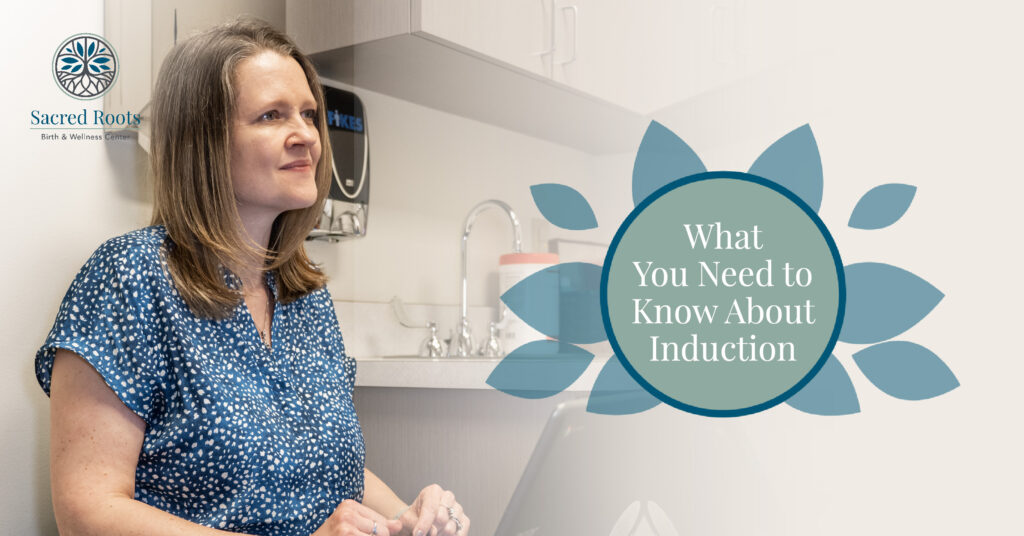What You Need to Know About Induction
While you may be familiar with some of the most common aspects of labor, you may be less familiar with how labor actually starts. Popular media often sends confusing messages about the beginning of labor, but we want our clients and community to have a strong understanding of how natural labor starts compared to inducing labor, whether through natural methods or medication.
What is an induction?
Although labor is a natural process that usually starts on its own, sometimes it can take longer than expected. This can cause several problems for the birthing person and baby. This may prompt your healthcare provider to try to induce labor.
Labor induction is when your healthcare provider encourages natural induction techniques for you to try or intervenes medically to start your labor. There are many methods for inducing labor with various levels of intervention.
Are they medically necessary?
Sometimes it might be necessary to induce labor, other times it is elective. Some causes of inducing labor include:
– You’re past your due date by 1 or 2 weeks. After 41 weeks, your placental function decreases so your baby might not be getting adequate nutrition and oxygen.
– You have a chronic health condition like diabetes, high blood pressure, or preeclampsia.
– Your ultrasound shows reduced fetal growth.
– You have a lesser amount of amniotic fluid.
– Your water broke but you’re not having contractions or have insufficient cervical dilation.
If the need arises, your healthcare provider should always discuss it with you and allow you to give consent before proceeding with anything.
What are some medical induction methods?
Before proceeding with induction, your healthcare provider will examine your cervix to check if it’s safe to proceed with induction. There are several medical interventions that a healthcare provider may use. For instance:
– You’re given a medicine that helps soften and dilate your cervix
– They may use a cervical hook to rupture your amniotic sac
– They may use a cervical ripening balloon
– You may be given Pitocin via an IV line. This mimics the effect of oxytocin and helps with uterine contraction.
Are there risks to induction?
The risk of induction depends on the procedure being used. Some common risks associated with medical inductions include:
– Infection
– Uterine rupture
– Uterine hyperstimulation may cause the breaking of the umbilical cord or increase in fetal heart rate
– Increased risk of C-section
Do you offer medical inductions at the birth center?
We do not offer medical inductions at the birth center, opting for natural induction methods instead when called for. Our model of care aims to facilitate the natural process of labor. We encourage our patients to go into labor spontaneously and naturally.
If a situation calls for it, your midwife may work with you and encourage you to try some natural methods of jump-starting your labor like:
– Drinking red raspberry leaf tea
– Trying acupuncture or acupressure
– Light Exercise
– Sex
– Nipple stimulation
– Castor Oil
However, if we think you need an induction for medical reasons, we will assist you in transferring care to a hospital-based provider.



